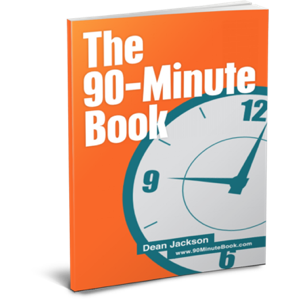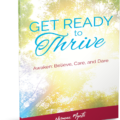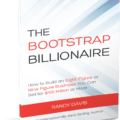Composing can be an intimidating undertaking for many folks, especially in the case of a book. Yet, for those who adore writing, there can be both excellent minor successes and extraordinary accomplishments. Composing a book can bring several advantages to your life. My article delves further into the topic of why it is beneficial to write a book. What is the best way to write a book in 30 days? Keep reading if you’re curious to learn the critical steps to composing a book in 30 days.
Nine tips for writing a book in 30 days
Composing a novel is a challenging yet fulfilling endeavor you will ever experience. You will acquire exceptional knowledge concerning yourself and the environment around you. At times, it can be difficult to determine if it would be beneficial. Below are nine suggestions to assist you in finishing your novel in a month.
1. Do your research
Do your research before you start writing. Despite the form of writing one is engaging in, it’s vital to have knowledge of the topic they are covering. Notably science fiction, historical fiction, and fantasy are notably accurate.
You don’t want your story to lack credibility due to an easily avoidable error. You can use your research as the basis for your account or as a source of inspiration.
2. Make an outline
Producing a book without first having the material for it is impossible. That’s where outlining comes in. The outline is like the framework of your story, providing the essential structure to which you add the details. It’s what gives you direction. You will understand the destination you aim for and the steps needed to reach it, and once you get it, you will be aware of what you have achieved.
An outline is also a great way to prevent writer’s block. Once you have a definite topic of focus, list all possible ideas connected to it.
How to Write the Outline for Your Book
Freedom is a beautiful thing. You can do anything. You can go anywhere. You have unlimited choices.
Your book could have 10 chapters or 20 chapters. It could have 2,000 words or 65,000 words. So many choices! That’s where a lot of would-be authors get stalled. They have no idea how many languages, structures, or stuff are necessary to make up their books. They don’t even know when they are done!
The issue with being free is that you have so many opportunities it can be hard to determine which to choose first. You procrastinate.
Let’s provide your book with a solid foundation so you can begin. This chapter will illustrate what a classic text appears like. Once familiar with the general outline, you can modify each point to fit your requirements. Once you have composed 10 chapters, you will be done with your Table of Contents too! Your book is already taking shape.
Basic Book Structure
Let’s explore the process of creating a business book that is factual in nature. Once familiar with the fundamentals, you can adjust the model to meet your objectives.
First, let’s assume your book has 10 chapters. You can have more or fewer. But 10 gives us a starting point. Chapters can be the same length or not. It doesn’t matter.
Chapter Overview
You can convey your message through narratives, personal accounts, charts, diagrams, images, written pieces, and statements from influential figures. Each chapter should have its own central theme. Ideally, every chapter should be designed to facilitate the reader’s gaining familiarity, admiration, and conviction in you, resulting in them subscribing to your philosophy and being eager to do business with you.
Every chapter should answer these questions:
- What is this chapter about?
- Why is it important for my reader to know this?
- How will I share my message?
- What will happen if readers follow my instructions? What will happen if they don’t?
- What key ideas or action steps should readers remember?
This will benefit a knowledgeable individuals looking to establish their reputation, convince people to agree with their beliefs, or establish a standard for people to remember. Naturally, every book is distinct, so adjust it as needed. This description should help you focus.

FREE BOOK
Discover the 5 Compelling Book Titles Types that create an ‘I Want That…’ response.
The First Chapter
Chapter 1 is the overview. You tell readers your big idea. The first chapter explains the problem you will solve. This text outlines the book’s content and justifies why the author is the optimal choice to create it. You could also provide an overview of the book by describing what the reader can take away from each chapter.
Do not provide exhaustive information on all of your innovative concepts and practices. Explain to them what you will be investigating together. But don’t show them how to do it here. You do that later. You can promise them and tease them, though. Offer words of encouragement (such as “It’s possible!”) and be informative (for example, “This is what you’ll learn”).
Chapters Two through Nine
These chapters outline your main idea and provide a thorough explanations to substantiate your arguments.
Final Chapter
In the final part (in our example, chapter 10), the main points are summarized, and readers are provided with practical advice on how to proceed. Writers of classical manuscripts might suggest activities readers can do to progress professionally, make the planet a better place, or find inner serenity. In business writing, the best move for authors to make should be to offer consulting, speaking, teaching, or some other form of assistance to people who read their work.
Additional Materials
Books also have introductory material (legal information, dedication, praise, preamble, prologue, and index of contents) and end content (index, bibliography, references, and sales data).
How to Outline Your Book Chapter by Chapter
Enough theory. Let’s outline your book!
Look at the daisy sketch illustrating the motif for a book about leadership. Each chapter reinforces the author’s ideas about leadership. For this situation, 10 sections involve a summary (Chapter 1), a brief review of what comes next (Chapter 10), and eight chapters that display each primary point. They are:
- Overview
- Courage
- Honesty
- Focus
- Respect
- Culture
- Supportive
- Humility
- Confidence
- Conclusion, Next Steps
Book Outline Format: All Purpose
Here’s another outline you can use:
Chapter 1: Overview/importance of the problem you are solving
Chapter 2: History of the problem
Chapter 3: Current state of the problem
Chapters 4–9: Descriptions of issues and solutions
Chapter 10: Future
Your Turn: List Your Ten Chapters
Using this worksheet, you can devise a plan for your book by noting 10 chapters and their topics. When you finish, you’ll have your table of contents.
You could write only one or two words. That’s fine. If you’d instead write a sentence, that’s fine. Don’t struggle to find perfect chapter titles. That comes later.
Complete the spaces below, and you are well to completing your publication.
Write your answers below:
- Introduction and overview
- Theme 1
- Theme 2
- Theme 3
- Theme 4
- Theme 5
- Theme 6
- Theme 7
- Theme 8
- Conclusion/Next Steps
Next Steps
Congratulations! You have finished the initial step of forming an outline and created a list of contents.
Instead of having other writing coaches instruct you to write down your thoughts and organize them, I gave you an organizational framework to jumpstart the writing process. If you were to empty your mind of ideas without considering any structure, you would soon run out of concepts to think of. You won’t see what you forgot to include.
In my technique, you have a framework to direct and stimulate you to transfer thoughts from your mind onto the page. You won’t appear shocked when you abide by my directions.
You have created the outline for your 10 chapters. At this point, it is necessary to design a structure for each book portion.
3. Create a writing schedule
Composing a book in 30 days is an exhilarating challenge. The emphasis is not only on the end result but also on the journey to reach it via the composition of the document. Maintaining that enthusiasm for the whole month is essential to prevent feeling exhausted and unmotivated in the middle. Devising an imaginative writing plan is the most successful approach to achieving that goal.
You must incorporate your writing aspirations into your everyday writing habits, so set aside time for it each day. Setting aside time each day, no matter how small, between making dinner and taking your dog for a walk,, can help you remain focused.
4. Set word count goals
It’s never too soon to begin considering the number of words. You can devise day-by-day word targets to assist you in reaching the ultimate objective of your work, no matter if you’re creating a novel, a nonfiction piece of writing, or a short story. There are many ways to do this. You may try to compose a 250-word essay in one sitting or challenge yourself to a 1,000-word article.
The figure you decide on must be suitable for the quality of work you hope to achieve. Good advice for novice writers creating an initial draft of a novel is to strive to write 1,000 words daily.
5. Establish a sacred writing space
Constructing a particular spot for composing is the ideal method to get yourself in the mood for writing. Ensure everyone in the house knows that your writing space is off-limits when it comes to interruptions, particularly in households with children or roommates. All distractions should be eliminated from this area to maintain concentration: no phones, no emails, and no social media.
If you have the option, pick a room with a door that can be shut. This establishes a natural separation between the areas of life that involve writing and those that don’t. It serves as a signal to your body to indicate that it is time to put pen to paper. Finally, don’t forget to personalize your sacred writing space!
7. Get the hard stuff out of the way first
If you decide to write a book in 30 days, it’s not the moment to disagree with yourself over whether you can succeed. Start by having faith in yourself that you can achieve it. You have to know that you can do it.
It is essential to persuade yourself that you are a true writer so that you stay dedicated to finishing the job promptly. That being said, let’s get down to business.
Write the problematic parts of your book first. Those are the parts that give you pause. They make you forget about working on your novel and turn off the laptop to have some leisure time, like watching TV or taking a four-hour nap.
8. Know when to walk away and return to your desk
It can be difficult for specific individuals who prefer to stay occupied with different activities at either home or work. Be careful not to burden yourself by attempting too much during the writing process. If you find yourself stressed by the many tasks you must complete every day, that can be an obstacle to concentrating on your book.
Rather than attempting to do everything simultaneously, beginning with little steps and gradually increasing from there is preferable. An illustration of this would be if you strive to avoid being sidetracked while focusing on your book, then set aside specific periods of the day when you will turn off all digital gadgets and concentrate solely on writing with no other diversions.
9. Reward yourself
It is essential to offer yourself a reward for completing any big and demanding project. The selection of premium you choose to give yourself is yours to decide. Some people may find it motivating to reward themselves with a Starbucks trip once they hit their word count goal, while others might choose to extend one of their shorter breaks a bit.
You must take the time to identify a reward in anticipation and ensure you will appreciate it. It is much more likely that people will stay dedicated to a task if they observe they are making headway toward achieving their desired objectives.
Guest Post Disclaimer
The views expressed in this post do not represent the views of 90-Minute Books. The information has not been verified and should be considered an opinion. You are always advised to do independent research.











